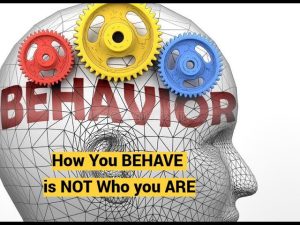Your Defensive Identification with the Aggressor (Abuser)
1. Introduction to Identification with the Aggressor
- The meeting began with a reference to Kafka’s Metamorphosis to illustrate how victims of narcissistic abuse gradually transform by identifying with their abusers unconsciously. This process involves adopting abuser’s beliefs, values, and behaviors as a defense mechanism to reduce threat and fear. This mechanism was originally documented by Ferenczi and expanded in psychoanalytical theory [00:00].
2. The Nature of Identification with the Aggressor
- Identification with the aggressor is unconscious and gradual, functioning as magical thinking where the victim believes emulating the abuser will protect them. It involves behavioral and psychological changes, including adopting aggressive traits or other characteristics of the abuser that do not conflict with the victim’s self-image [01:10].
- This identification manifests as a defensive strategy against perceived uncontrollable opponents to avoid further victimization [02:50].
3. Psychoanalytic Foundations
- Anna Freud first described identification with the aggressor in the context of the Oedipal phase, where a child identifies with a rival parent to cope with conflict [05:00].
- Classic Psychoanalytic theory by Sigmund Freud explained this identification as a defense against punishment, leading the child to assimilate the punishing parent’s traits unconsciously [06:10].
- Identification can be defensive or analytic, with analytic identification starting from a child’s initial dependence on caregivers and creating internal representations (internal objects) for self-soothing [07:20].
4. Internal Representations and Narcissism
- When the caregiver (mother) is abusive or neglectful, the child misattributes the internal representation of the mother to themselves, leading to pathological narcissism and fusion with an abusive internal object [08:30].
- This process causes the child to interact with the internal object exclusively, cutting off the abusive external mother and incorporating this internalized figure into their super ego [10:00].
5. Identification with the Abuser in Trauma and Hostage Situations
- Cases like concentration camps and hostage situations demonstrate identification with the abuser as a survival mechanism [12:30].
- The concept of Stockholm Syndrome, despite being debated, closely relates to this defense mechanism where hostages develop loyalty or affection for captors and reject rescuers [14:10].
- Identification leads to emotional involvement, including compassion, protectiveness, and justification for the abuser’s behavior [16:20].
6. Behavioral Manifestations and Consequences
- The victim begins to mimic and exaggerate the abuser’s negative traits, becoming a caricature of the abuser, often observed in criminal couples or abusive relationships [18:10].
- This behavior aims to communicate to the abuser a message of alliance to avoid further harm, though it usually results in increased aggression from the abuser who perceives it as weakness or manipulation [20:30].
7. Effects on Victims’ Identity and Mental Health
- Identification with the abuser leads to loss of core identity, a symbiotic relationship with the abuser, and difficulty letting go even after abuse ends [22:50].
- Victim’s mental health can deteriorate, resulting in depression, anxiety, substance abuse, and perpetuation of abuse cycles [23:50].
- The defense mechanism is maladaptive, producing negative long-term outcomes despite being temporarily anxiolytic and a survival strategy [25:10].
8. Clinical Implications and Therapeutic Perspectives
- Victims often remain unaware of their transformation due to isolation and lack of external feedback, making identification with the abuser a hidden but damaging process [27:30].
- Awareness and intervention from outside sources are crucial to breaking the identifying cycle by providing feedback and recalibration of victim’s behavior and identity [28:50].
Note: All timestamp references correspond to approximate moments in the transcript for ease of review.






